Object-Oriented Programming with SIMOTION: Fundamentals, Program Examples and Software Concepts According to IEC 61131-3
Original price was: ₹4,419.70.₹3,535.76Current price is: ₹3,535.76.
ISBN: 9783895784569
Author/Editor: Michael Braun
Publisher: Publicis Publishing
Year: 2017
1 in stock (can be backordered)
Description
In mechanical engineering the trend towards increasingly flexible solutions is leading to changes in control systems. The growth of mechatronic systems and modular functional units is placing high demands on software and its design. In the coming years, automation technology will experience the same transition that has already taken place in the PC world: a transition to more advanced and reproducible software design, simpler modification, and increasing modularity. This can only be achieved through object-oriented programming.
This book is aimed at those who want to familiarize themselves with this development in automation technology. Whether mechanical engineers, technicians, or experienced automation engineers, it can help readers to understand and use object-oriented programming.
From version 4.5, SIMOTION provides the option to use OOP in accordance with IEC 61131-3 ED3, the standard for programmable logic controllers. The book supports this way of thinking and programming and offers examples of various object-oriented techniques and their mechanisms. The examples are designed as a step-by-step process that produces a finished, ready-to-use machine module.
Contents: Developments in the field of control engineering – General principles of object-oriented programming – Function blocks, methods, classes, interfaces – Modular software concepts – Object-oriented design, reusable and easy-to-maintain software, organizational and legal aspects, software tests – I/O references, namespaces, general references – Classes in SIMOTION, instantiation of classes and function blocks, compatible and efficient software – Introduction to SIMOTION and SIMOTION SCOUT.
Additional information
| Weight | 0.956 kg |
|---|
Product Properties
| Year of Publication | 2017 |
|---|---|
| Table of Contents | Information for readers 13 1 Developments in the Field of Control Engineering 1 18 1.1 The early days of programmable logic controllers (PLCs) 1.1 19 1.2 The PLC learns to communicate 1.2 22 1.3 Development of fieldbus systems 1.3 24 1.4 Integration of display systems in PLCs 1.4 25 1.5 Integration of motion control in PLCs 1.5 27 1.6 Drives become fully-fledged bus system nodes 1.6 30 1.7 PLC and PAC - what is the difference? 1.7 31 1.8 General conclusions about past developments 1.8 31 2 Basic Principles of Object-Oriented Programming 2 33 2.1 The basis of object-oriented programming 2.1 33 2.1.1 History 33 2.1.2 What's different? 34 2.1.3 What does object orientation mean? 35 2.1.4 Objects and their interactions 36 2.2 General principles of OOP 2.2 37 2.2.1 Objects 37 2.2.2 Classes 39 2.2.3 Inheritance 39 2.2.4 Overriding 41 2.2.5 Interfaces for object interaction 42 2.2.6 Summary 44 2.2.7 Advantages of using OOP 45 2.2.8 Disadvantages of OOP 45 2.3 Tips about defining classes 2.3 46 3 Object-Oriented Programming 3 49 3.1 Implementation of OOP with SIMOTION 3.1 49 3.2 Function blocks with methods 3.2 50 3.2.1 Modularization without OOP extensions 51 3.2.2 Program and data are separate 53 3.2.3 Advances in the life cycle of software 55 3.2.4 Disadvantages of programming without OOP extensions 56 3.2.5 Extensions to FBs and their access specification 57 3.2.6 Use of methods to improve program structuring 59 3.2.6.1 Example of FB with methods 60 3.2.6.2 Example of a function block call 61 3.2.7 Function block with methods for placing commands 62 3.2.7.1 Example of the FB with command methods 63 3.2.7.2 Example of an FB call with command methods 65 3.3 Classes (CLASS) 3.3 66 3.3.1 Keywords supported for a class 67 3.3.1.1 Example of a CLASS declaration 69 3.3.2 Methods (METHOD) 69 3.3.3 Methods and their access specification 70 3.3.4 Declaration of instances of a class 71 3.3.5 Rules for identifiers in a class 72 3.3.6 Use of class methods 72 3.3.6.1 Example of a CLASS COUNTER 73 3.3.6.2 Use of the method of CLASS COUNTER 74 3.3.6.3 Extension of the CLASS COUNTER and use of THIS 75 3.3.6.4 Use of the methods UP and DOWN 76 3.3.7 Classes and inheritance 76 3.3.7.1 Example of derivation of a class 78 3.3.7.2 Example of how to use base and derived classes 79 3.3.7.3 Other aspects of the method call 80 3.3.7.4 Example of base and derived classes in a function 81 3.3.8 Abstract classes 82 3.4 Examples of valve applications with OOP 3.4 84 3.4.1 Example with 4/3-way valve 84 3.4.1.1 Example of a class for 4/3-way valves 85 3.4.1.2 Example of a valve call 87 3.4.1.3 Example with 4/3-way valve with fast/slow speed 88 3.4.1.4 Example of a derived class ValveControl43FS 89 3.4.1.5 Example of calls of base class and extended class 90 3.4.1.6 Example of call of extended class with basic function 91 3.5 Interfaces 3.5 92 3.5.1 Supported features 93 3.5.2 Principles of interfaces 94 3.5.2.1 Example of an interface declaration 95 3.5.3 Representation of interfaces in the PNV of SCOUT 97 3.5.4 Benefits of interfaces 99 3.5.5 Interfaces as a reference to classes 100 3.5.6 Valve classes with interfaces 103 3.5.7 Declaration of the valve interface 105 3.5.7.1 Example of ValveControl43 with limit switch monitoring 105 3.5.7.2 Example of ValveControl43 with error reporting 108 3.5.7.3 Example of ValveControl43 with test error reporting 112 3.5.7.4 Example of class HMIReporting 113 3.5.7.5 Example of ValveControl43 with error reporting 115 3.5.8 Interface for neutralizing I/O components 116 3.5.8.1 Connection of cameras to the control system 116 3.5.8.2 Interface definition for a camera connection 122 3.5.9 Interface for neutral I/O connection (condensed example) 123 3.5.9.1 Interface definition for neutral I/O connection 125 3.5.9.2 Implementation in classes 125 3.5.9.3 Interface definition and mapping table program 126 3.5.9.4 Program for implementation and use of classes 127 3.5.9.5 Interface for fast/slow speed switchover 129 3.5.9.6 Implementation of classes for fast/slow speed 130 3.6 Further optimization of the valve class 3.6 131 3.6.1 Existing implementation of ValveControl 131 3.6.2 Design of a state machine 132 3.6.2.1 Example of ValveControl43ST - state machine using CASE 134 3.6.2.2 Example of ValveControl43ST - state machine with classes 140 3.7 Abstract class for different drives 3.7 143 3.7.1 Functional differences between various drive solutions 144 3.7.2 Class model for connecting different drives 146 3.7.2.1 Example of abstract class "CDrive" 147 3.7.2.2 Example of class for direct-on-line starting drives 148 3.7.2.3 Example of class for drives with star-delta starters 149 3.7.2.4 Example of class for speed-controlled drives 151 3.7.2.5 Example program for controlling drives of different types 155 3.8 Abstract class versus interface 3.8 157 3.9 OOP opens up the world of design patterns 3.9 159 4 OOP Supports Modular Software Concepts 4 161 4.1 Assembling projects for real machines 4.1 162 4.1.1 Module design 163 4.1.2 The role of the software developer 163 4.1.3 Modularizing software 164 4.1.3.1 Creating equipment modules 166 4.1.3.2 Software design of the equipment module 167 4.1.3.3 Example of the class "CEMPusher" 169 4.1.3.4 Example of an equipment module call 174 4.1.4 Preparations for multiple reuse 175 4.1.4.1 Example of the neutralized equipment module 176 4.2 SIMOTION easyProject project generator 4.2 177 4.2.1 Adding your own modules to the project generator 181 4.2.2 Creating a user interface for the project generator 182 4.2.3 XML description of the equipment module 184 5 Guide to Designing and Developing Software 5 188 5.1 Establishing requirements 5.1 188 5.1.1 Starting point - user interfaces 189 5.1.2 Starting point - process operations 189 5.1.3 Starting point - mechanical engineering elements 190 5.1.4 Existing solutions 191 5.2 Object-oriented design 5.2 192 5.2.1 Encapsulation 192 5.2.2 Responsibility of a class 193 5.2.3 Commonalities and differences between objects 194 5.2.4 Principle of replaceability with derived classes 194 5.2.5 Determining relationships 195 5.2.6 SOLID principles 197 5.3 Reusable and easy-to-maintain software 5.3 197 5.3.1 How can software be made reusable? 197 5.3.2 Libraries are helpful 198 5.3.3 What is the best way to develop modules? 198 5.4 Organizational and legal aspects 5.4 201 5.4.1 Transition to OOP must be planned 201 5.4.2 Software needs to be planned 202 5.4.2.1 Analysis of existing programs 202 5.4.2.2 Reuse of software 203 5.4.3 Reuse and ownership of software 205 5.4.3.1 Distribution of software 206 5.4.3.2 Acquisition of software 207 5.4.4 "Good software" and object-oriented design 208 5.5 Software tests are a must! 5.5 211 5.5.1 Module test 213 5.5.2 Integration test 214 5.5.3 System test 214 5.5.4 Acceptance test 216 6 Additional Topics Relating to Software Structuring 6 217 6.1 I/O references 6.1 217 6.1.1 Declaration 218 6.1.2 Linking references to I/O variables 218 6.2 Namespaces 6.2 220 6.3 General references 6.3 222 6.3.1 Declaration and initialization 223 6.3.2 Working with references 224 7 Description of the Extended Functionality in SIMOTION 7 228 7.1 General extensions to the programming model 7.1 228 7.2 Classes in SIMOTION 7.2 229 7.2.1 Constants and user-defined data types in classes 229 7.2.2 Naming of variables in classes and methods 230 7.2.3 Method calls 231 7.2.4 FINAL for methods and classes 232 7.2.5 Declaration of abstract classes and methods 232 7.2.6 Interface implementation and class derivations 233 7.2.7 Type conversions for classes and interfaces 234 7.3 Instantiation of classes and function blocks 7.3 236 7.3.1 User-defined initialization of instances 236 7.3.2 Initialization of interface variables 237 7.3.3 Creating class and function block instances 238 7.3.4 RETAIN data in classes and function blocks 239 7.3.5 Arrays of variable length 239 7.4 Tips for creating compatible and efficient software 7.4 240 7.4.1 Methods and function calls 240 7.4.2 Use of enum values and constants 240 7.4.3 Use of predefined namespaces 241 7.4.4 Declaration of data types, variables and methods 242 7.4.5 Preparing structured data for transmission 243 8 Introduction to SIMOTION 8 246 8.1 Classic development of control systems 8.1 246 8.2 New control concepts required 8.2 247 8.3 Technology Objects in SIMOTION 8.3 248 8.4 Three hardware platforms 8.4 249 8.5 Connecting drives and I/O devices to SIMOTION 8.5 251 8.6 Handling kinematics in SIMOTION 8.6 251 8.7 SIMOTION's programming model 8.7 252 8.7.1 The units of SIMOTION 253 8.7.2 The variable model in SIMOTION 254 8.7.3 Libraries in SIMOTION 258 8.8 The SIMOTION SCOUT engineering system 8.8 259 8.9 Components of SCOUT 8.9 260 8.9.1 The SCOUT project navigator 261 8.9.2 Creating a new project 262 8.9.3 Creating a new device 263 8.9.4 Hardware configuration 266 8.9.5 The SIMOTION address list 268 8.9.6 Creating axes 269 8.9.7 Creating drives 274 8.9.8 Creating path objects 276 8.9.9 Language editors in SCOUT 278 8.9.10 Support for programming languages 279 8.9.11 Inserting program sources (units) 280 8.9.12 Entering programs 282 8.9.13 Assigning programs to the execution system 284 8.9.14 Integrated test functions 285 8.9.15 Testing with "program status" 286 Note about using the example programs 293 |
| Author | Michael Braun |
| ISBN/ISSN | 9783895784569 |
| Binding | Hardback |
| Edition | 1 |
| Publisher | Publicis Publishing |
You must be logged in to post a review.

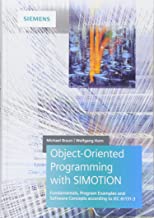
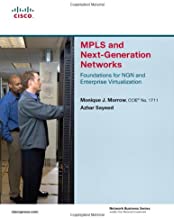
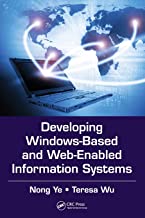
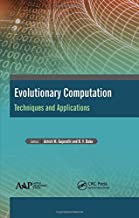
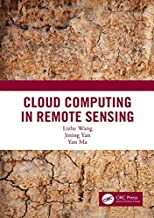
Reviews
There are no reviews yet.